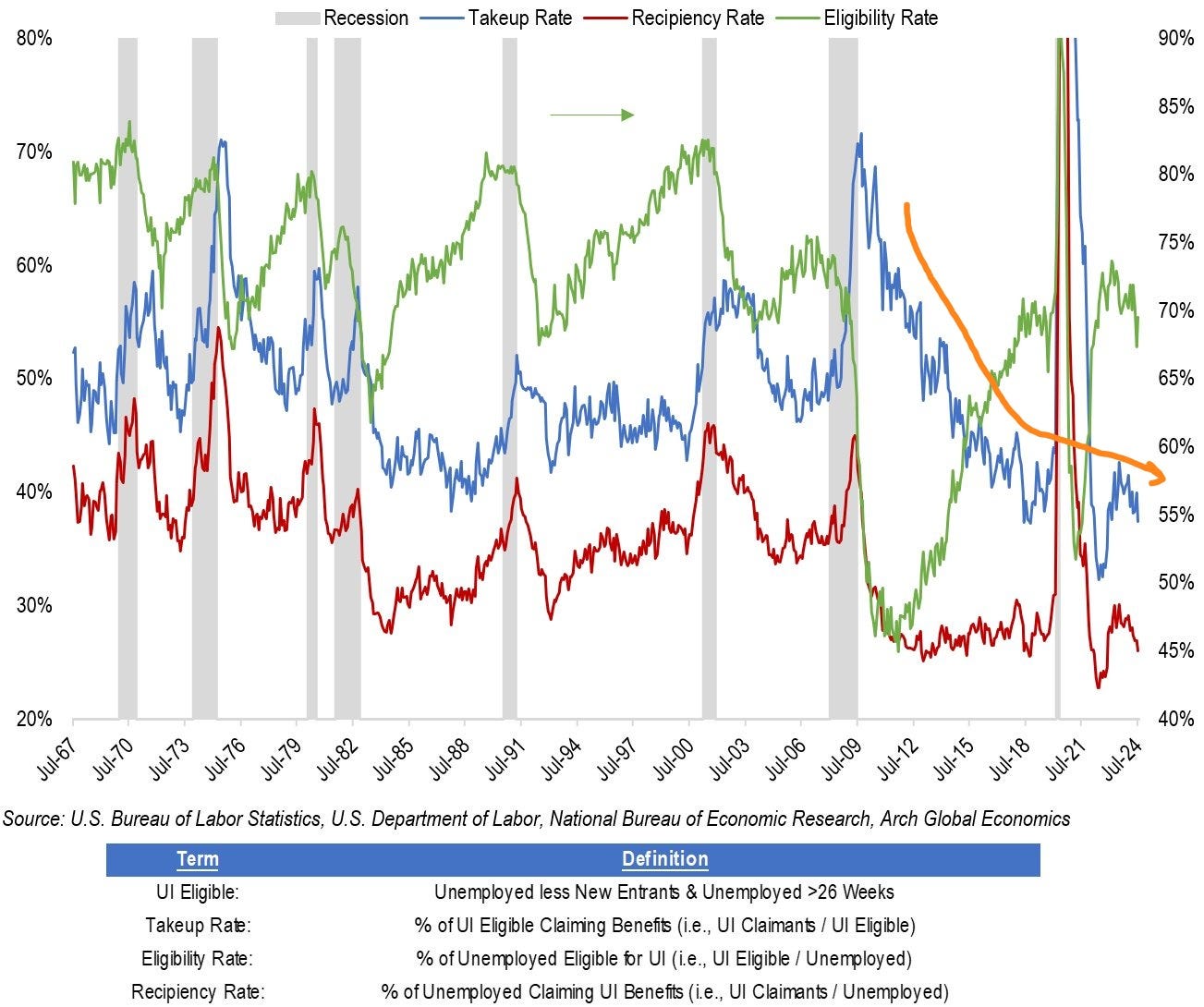Part-time hustler
An unemployment puzzle revealed, with a somewhat verboten-to-notice observation at its core
explaining the gap between low unemployment claims and lots of reported firings
people have been opting out of unemployment for a while now—it’s actually a Big Tech miracle
this is the good kind of part-time hustle, right?
did the migrants ‘take our jerbs?’ a remix
a coda on auto delinquencies
👉👉👉Reminder to sign up for the Weekly Recap only, if daily emails is too much. Find me on twitter, for more fun. Part-time hustler
You’d think “is the labor market strong or weak?” would be a relatively straightforward question to answer, but it’s not.
As Random Walk pointed out last week, things are a bit mysterious.
On the one hand, new unemployment insurance claims are pretty low. If people aren’t filing for unemployment insurance, then things must be ok, right?
Nope, not necessarily.
Why? Because according to the census survey, people have reported a pretty dramatic uptick in layoffs, and layoffs are generally not good.
So what gives? Are layoffs skyrocketing, and if so, then why aren’t unemployment claims following suit?
It turns out that there may actually be a pretty good explanation for the discrepancy, and it’s not terribly comforting. It does, however, reflect an underappreciated contribution that some of the most prominent tech companies have made to the broader economy, so there’s that (and that’s not nothing).
Let’s dig in.
Take-up rate has been declining for a while
The first observation is that the gap between claims and reported layoffs is not a new thing.
The “take-up rate” (i.e. the share of eligible unemployed who actually file for insurance) has been declining for a while now:
The take-up rate for unemployment benefits is now just ~55%, and has been steadily declining post-GFC.
What that tells you is (again) that the gap between reported layoffs and claims is likely real. The survey data is not just noise.
People are, in fact, getting laid off (at a rather precipitous rate), even though it’s not showing up in the unemployment claims data. In fact, it’s been increasingly true for a while that people get laid off without it showing up in the unemployment claims data.
So, if the newly fired aren’t filing for unemployment, and they’re not getting new jobs (because the re-entry rate is low), then what are they doing?
They’re getting part-time work.
In all likelihood, they’re getting part-time work as a gig-worker, i.e. an uber driver or e-grocer.
And that’s pretty incredible, if you think about it. These technology businesses have made it so relatively easy to make part-time money, that people prefer to do that than file for unemployment.
Thank you, Uber, etc. for that incredible social benefit you’ve provided.1
Part-timers, but not by choice
Well, that’s not so bad, right? OK, so some layoffs. It’s a little early retirement + a small side-hustle for some extra dough?
That would be nice, but it does not appear that way.
The rise in part-time workers is not the good kind of “side-hustle” part-time work. It’s the bad kind of “lack of a better alternative” part-time work.
Keep reading with a 7-day free trial
Subscribe to Random Walk to keep reading this post and get 7 days of free access to the full post archives.



